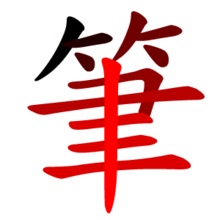|
Reading order - the table
above should be read in the following order. |
- read the table from top to bottom
and then from right to left
- a
i u e o
....
ka ki
ku ke
ko
.... etc.
- read the ya, yu, yo combination
sounds from top to bottom and then from right to left
- ya yu
yo
....
kya kyu
kyo
.... sha shu
sho .... etc.
|
|
Basic Japanese sounds - the
basic Japanese sounds are written in romaji with English
equivalents. |
- the red colored letters in the
English words show the pronunciation of that sound
- k +
a =
ka =
cot
( co
is the pronunciation of ka
)
- n
+
u
=
nu
= new
( new
is the pronunciation of nu )
- r +
o =
ro =
road
( roa
is the pronunciation of ro )
- w +
a =
wa =
want
( wa
is the pronunciation of wa )
|
|
Combination Japanese sounds -
the combination Japanese sounds are formed with a consonant
and either ya,
yu, or yo. There are no English equivalents
for the combination sounds. For example keeya and nyou
are not English words. |
- the combination Japanese sounds are
formed with either ya, yu, yo, and a consonant
- k +
ya =
kya
.... which is pronounced .... keep
+ yacht
=
keeya
- n +
yu =
nyu
.... which is pronounced .... ten
+ you
=
nyou
|
|
Exceptions - there are
exceptions to the Japanese sound pronunciation, 7 for the
basic sounds and 9 for the combination sounds. All
exceptions are shown in the gray areas of the table. |
- shi, chi, tsu, and
ji
are exceptions to the basic pronunciation pattern
- tsu is pronounced as in
the Japanese word tsunami
- hu is
only pronounced as hoo
in hoop,
however, fu is used when
typing on a keyboard to get the hiragana, katakana, and
kanji equivalent of the sound hu.
For example, Japanese people pronounce France as huransu,
but type furansu when typing it on a keyboard.
- ha can
also be pronounced as wa
- he can
also be used as e
- sha, shu, sho, cha, chu, and
cho all pronounce the
"y" sound but drop the "y" when writing in
romaji
|
|
Sound equivalents - each sound written in romaji
has written hiragana and katakana equivalents. |
- example of sound written in romaji,
hiragana, and katakana
- sound
bop = romaji a =
hiragana あ = katakana ア
|
|
A single sound in Japanese can be
written in romaji,
hiragana, katakana, and kanji but each sound can only be pronounced one way. |
- Example: The sound
ki, as in the word
keep, can only be
pronounced one way but can be written in romaji,
hiragana, and katakana. Many kanji also have the
sound ki. The following are
the different ways to write the sound
ki.
|
|
Sound in English |
Written in romaji |
Written in hiragana |
Written in katakana |
keep |
ki |
 |
 |
|
 Japanese
Hiragana Katakana Kanji
Japanese
Hiragana Katakana Kanji











